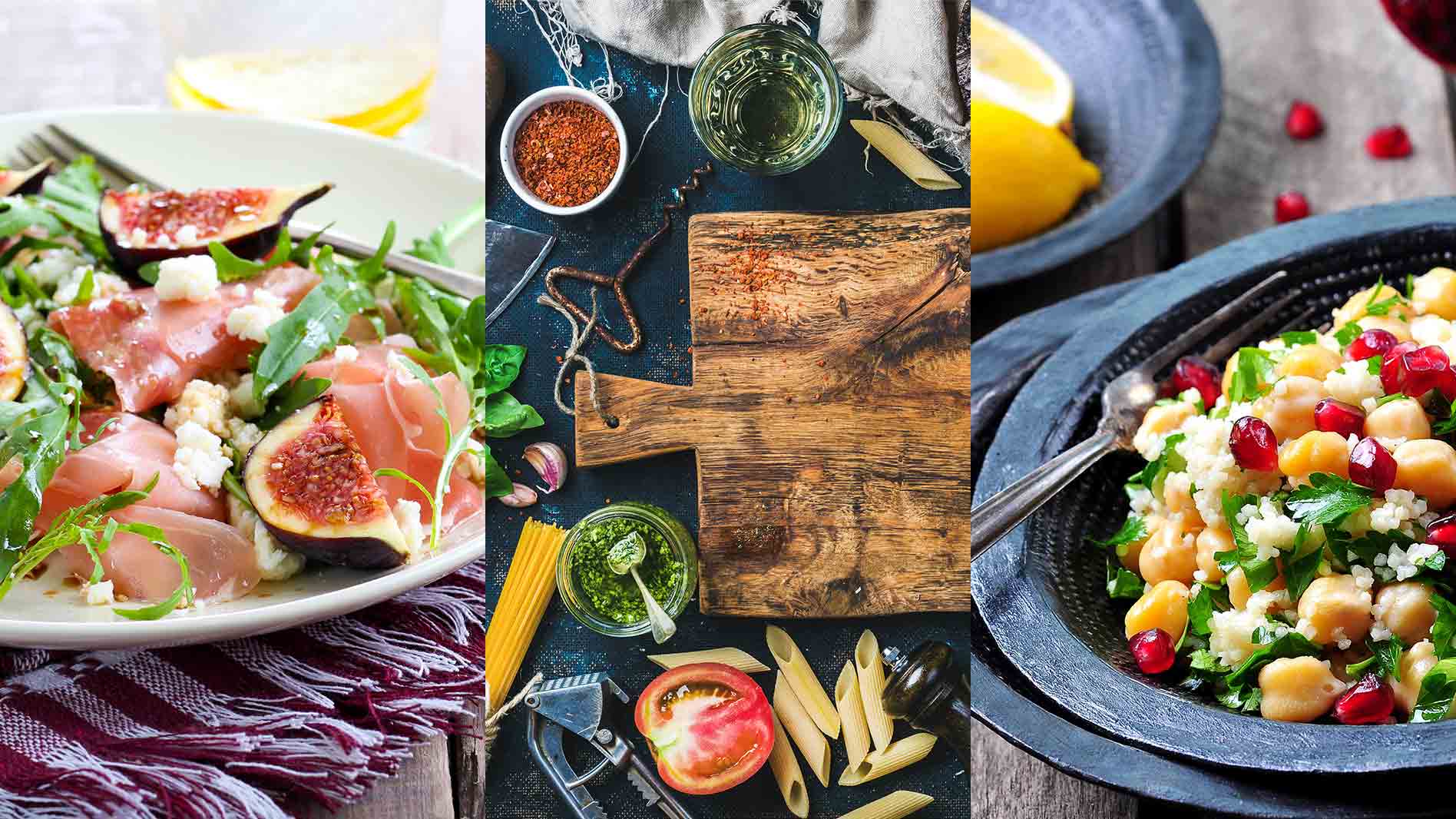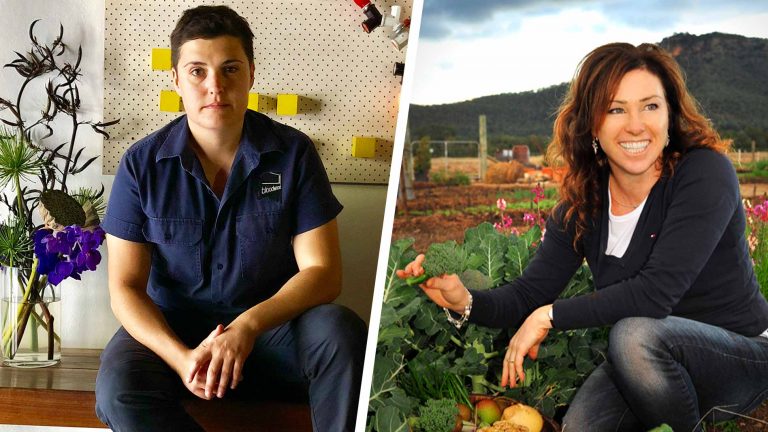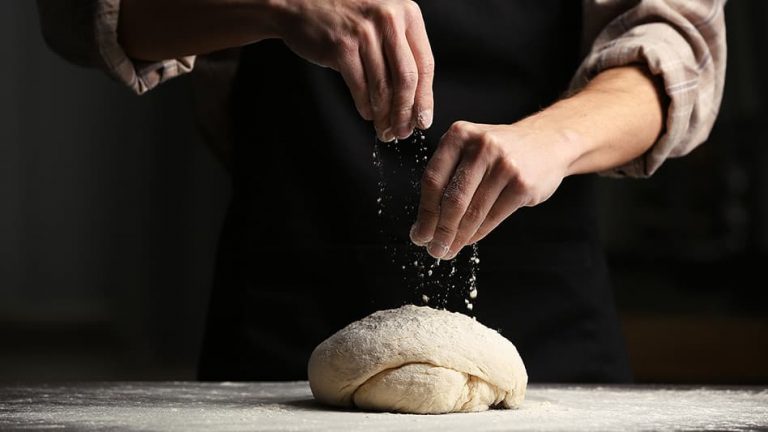
In the age of superfoods, ancient grains and international flavours, side dishes of limp greens are no longer going to go down well with your customers.
With diners now expecting salads that surprise and delight, four of Australia’s most illustrious chefs share their insights on how to create salads that could be a meal unto themselves.
The chefs:
Jarrod Di Blasi:
Head Chef, Ezard, Melbourne
Good Food Guide’s 2017 Young Chef of the Year
Two Chef Hats (2016, 2017) The Age Good Food Guide
Four Toques (2016) Gault and Millau Australia
Maggie Beer:
Cook, food author, restaurateur, television personality and food manufacturer
Member of the Order of Australia
Stuart Deller:
Head Chef, Port Phillip Estate
One Chef Hat (2016, 2017) The Age Good Food Guide
Somer Sivrioglu:
Chef, restaurateur, cookbook author, radio and TV food show personality
Efendy, Balmain and Anason, Barangaroo
Two Toques (2015, 2016) Gault and Millau Australia
The Manhattan-esque showstopper:
There’s always a salad on the a la carte menu at Ezard, but there’s also an eight-course vegan tasting menu that matches the kitchen’s regular degustation blow for blow. Head Chef Jarrod Di Blasi says offering so many vegan dishes forces him to really push the boundaries when it comes to creating innovative, seasonal plant-based dishes.
“In creating an eight-course meal that’s entirely vegan, a lot of consideration has to go into ensuring there’s variety and depth between the courses,” Chef Di Blasi said. “This means some dishes err towards the lighter side (like the tofu shooters that replace the famed oyster shooters), some involve broths, there are curries, and desserts as well – it’s never just leaves on a plate.”

|Image| Chef Jarrod Di Blasi from Ezard.
“At EZARD, our philosophy is that all dishes strike a balance between sweet, sour, salty and hot and this carries through to our salad dishes too. The key to making a salad enticing is to ensure all of the following are present; that the dish is (as aforementioned) balanced; it’s textural and interesting; and finally, that it’s luxurious – none of our salads should ever come across as an afterthought.”
The country cooking icon:
Maggie Beer remembers when “salad greens” were synonymous with iceberg lettuce but says salads are now more than just a garnish.
“[Salads] are a reflection of our multicultural influences when it comes to cuisine, and also our increased knowledge of nutrition and health,” Maggie said.
“I love salads as a meal unto themselves, rather than as a side dish, so I always include hearty additions like roasted vegetables, toasted nuts and seeds and my favourite cheeses.

|Image| Maggie Beer in her garden.
The dressing is absolutely a deal breaker too,” she said. “It has to be well balanced, and for me, there’s nothing worse than salad leaves that are swimming in dressing; there should only ever be enough to coat the leaves.”
The Turkish ambassador:
For decades, Somer Sivrioglu has worked to bring the richness of Turkish culinary traditions to Australian palettes. If the success of his restaurants Efendy and Anason are anything to go by, Aussies can’t get enough of his exotic flavours. He says Australians are becoming much more adventurous when it comes to new ingredients – a development all chefs can capitalise on to diversify their menus.
Chef Sivrioglu said Turkish cuisine is a rich tapestry of different produce influenced by region and climate.
“Where salad leaves, wild greens, olives and olive oil [are] very popular around the Aegean region, pomegranate, legumes and Mediterranean herbs are plentiful in central and south east Anatolia,” he said. “[The] Mediterranean region produces incredible varieties of citrus, figs and stone fruits, and in north, the Black sea region is the star for spinach, silverbeet and all kinds of green leaves,” Chef Sivrioglu said.

|Image| Chef Somer Sivrioglu from Efendy’s Gavurdag salad
Learning about new ingredients and how they can pack a punch in your regular kitchen repertoire could be a simple solution to keep your diners interested in your salad menu.
“Turks love using pomegranates and pomegranate molasses in their salads as a great alternative to balsamic vinegar,” Chef Sivrioglu said.
The regional fine diner:
The Good Food Guide selected Port Phillip Estate’s vegan menu one of the top 10 in Melbourne in 2016. Head Chef Stuart Deller said while providence is always important, he takes extra care when sourcing veggies for his vegan menu, and the results are starting to show.
“When we use protein, we use the best protein we can get, and the same goes with veggies,” Chef Deller said.
“We have quite an extensive veggie garden on the property and then we use local suppliers who don’t use any chemicals.

|Image| Chef Stuart Deller’s Vegan Spätzle salad at Port Phillip Estate.
“Over the past few years I’ve noticed that even meat eaters are choosing our vegetarian menu options more often,” he said. “I think people want to eat cleaner and healthier particularly at lunchtime.”
Recipes:
Jarrod Di Blasi
Salad of figs and local asparagus, smoked ricotta, air dried beef, olive, shallot and nut dressing
Serves 10
Smoked Ricotta:
2 Lt milk
480ml cream
360ml buttermilk
Salt to taste
100g hickory wood chips
Air dried beef:
2.5 kg topside, trimmed of excess fat, cut into logs with 10cm diameter
650 ml red wine
650 ml white wine
250 g sea salt
250 g sugar
40 g rosemary
8 bay leaves
20 black peppercorns
1 bunch thyme
5 cloves garlic crushed
4 strips orange peel chopped
12 chillies sliced
5 star anise
5 cloves
Olive soil:
200g dehydrated olives
150g demerara sugar
40g almond meal
Shallot and nut dressing:
200ml walnut oil
200ml hazelnut oil
600ml grapeseed oil
200ml white wine vinegar
200gDiced shallot
Salt and pepper
Fig purée:
500g fresh figs cut in half
250ml red wine
250 ml port
Sea salt to taste
Sugar to taste
Lemon juice to taste
Garnish:
3 bunches green asparagus
20 fresh figs
40 hazelnuts roasted and peeled
40 nasturtium leaves
Method:
Smoked ricotta:
- Whisk together all ingredients in a large pot, bring to a simmer over a very low heat.
- Turn off and allow sitting for two minutes before covering and transferring to a warm spot for 30 minutes. In this time the curds should have split from the whey. Then gently ladle mix into a colander lined with Muslin cloth and sit for 12 minutes, reserving liquid, while waiting, set up a smoking device by putting the hickory wood chips on a square cut out of alfoil, and put into a gastro tray with a cooking rack placed over the top. Put another gastro on top for the lid, you will need a two top burner, once your device starts smoking, transfer the ricotta into a half gastro, open the lid and place it onto the rack inside, Close the lid and turn of the burners, set a 6 minute timer, when ready put the tray of smoked ricotta in fridge to cool. When chilled, pass through a drum sieve. Season with salt and pepper, store in airtight containers till required. Note you can also adjust the consistency to your liking by Whisking in some of the reaming whey.
Air dried beef:
- Burn off alcohol by bringing to the boil in a large pot and flaming until all alcohol is removed.
- Add remaining ingredients and allow to come down to 37 degrees.
- Drop beef into marinade ensuring it is well covered. Leave for 1 week.
- Drain off marinade then wrap in muslin and tie very tightly to produce an evenly rounded shape.
- Hang in the cool room for 2 weeks.
- Once dried, cut each log in half, vac Pac and freeze.
- Using a meat slicer, slice beef into slices approx. 1mm thick. Lie separately on greaseproof paper and chill.
Olive soil:
- Blitz olives in Robot Coupe until coarsely broken down
- Add remaining ingredients and continue to blitz until mix is evenly dark brown in color. Note, if this blitzes for too long, it will turn to a paste.
Shallot and nut dressing:
Combine all ingredients, then reserve until needed.
Fig puree:
- Combine figs, red wine and port and macerate for a minimum of 2 days, maximum of 4 days.
- When ready, get a heavy based pot on the stove and get smoking hot.
- Pour the figs and liquid in, this will rapidly reduce down. The liquid will become syrupy and the figs cooked and disbursed through the mix. At this stage it is ready to transfer to an upright blender and blend till completely smooth.
- Pass through a drum sieve, season with salt, sugar and lemon juice to taste.
- Chill, then store in an airtight container til required.
To serve
- Put a good tablespoon dollop of smoked ricotta in the middle of the plate; with the back of a spoon, smear it in a round motion to form a flat rustic circle.
- Neatly working around the circle, arrange the figs, then lean the asparagus against the figs and follow with 4 slices of air dried beef.
- Dress the garnish with the vinaigrette, pipe 5 small dots of the puree around the ricotta, then scatter some olive soil and the hazelnuts over the dish.
- Finish with 2 leaves of nasturtium.





